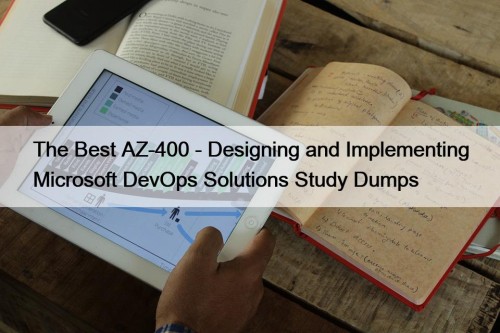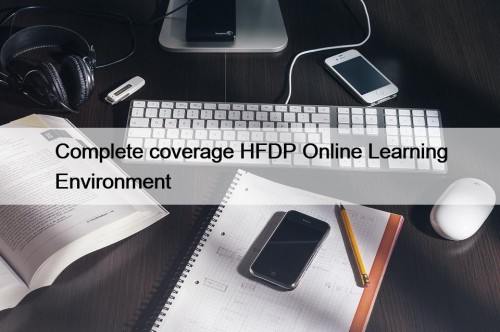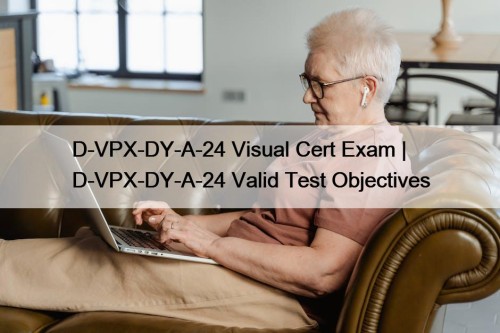Most Popular
 The Best AZ-400 - Designing and Implementing Microsoft DevOps Solutions Study Dumps
The Best AZ-400 - Designing and Implementing Microsoft DevOps Solutions Study Dumps
2025 Latest Actual4dump AZ-400 PDF Dumps and AZ-400 Exam Engine ...
 Complete coverage HFDP Online Learning Environment
Complete coverage HFDP Online Learning Environment
Besides ASHRAE HFDP exam is popular, Cisco, IBM, HP and ...
 D-VPX-DY-A-24 Visual Cert Exam | D-VPX-DY-A-24 Valid Test Objectives
D-VPX-DY-A-24 Visual Cert Exam | D-VPX-DY-A-24 Valid Test Objectives
P.S. Free 2025 EMC D-VPX-DY-A-24 dumps are available on Google ...



Valid Change-Management-Foundation Exam Revision Plan, Ensure to pass the Change-Management-Foundation Exam

The simulation of the actual Change-Management-Foundation test helps you feel the real Change-Management-Foundation exam scenario, so you don't face anxiety while giving the final examination. You can even access your last test results, which help to realize your mistakes and try to avoid them while taking the Change Management Foundation Exam (Change-Management-Foundation) certification test.
APMG-International Change-Management-Foundation Exam Syllabus Topics:
| Topic | Details |
|---|---|
| Topic 1 |
|
| Topic 2 |
|
| Topic 3 |
|
| Topic 4 |
|
| Topic 5 |
|
| Topic 6 |
|
| Topic 7 |
|
| Topic 8 |
|
| Topic 9 |
|
| Topic 10 |
|
>> Change-Management-Foundation Exam Revision Plan <<
Change-Management-Foundation Study Materials Boosts Your Confidence for Change-Management-Foundation Exam - DumpTorrent
Our DumpTorrent Change-Management-Foundation exam materials provide all candidates with available free Demo. Before you decide to purchase Change-Management-Foundation exam materials, we suggest that you should download our Demo. You can check for free demos to see if our exam questions contain what you need for the Change-Management-Foundation exam, and you can view other exam applicants' experiences by using our exam materials. Tested and verified - Our Change-Management-Foundation Exam Materials were trusted by thousands of candidates. You can visit our recommendation section and read the first-hand experience of verified users. Our Change-Management-Foundation exam materials will help you figure out what the actual product will provide you, and whether these features will help future users learn within a week and pass the exam successfully.
APMG-International Change Management Foundation Exam Sample Questions (Q57-Q62):
NEW QUESTION # 57
Which reason explains why it is helpful to segment stakeholders?
- A. Identities individuals or groups who are resisting change
- B. Enables different approaches and analysis techniques to be used with different stakeholder groups
- C. It highlights the level of influence and interest stakeholders have in the planned change
- D. Helps identify the organization's culture for scoping appropriate engagement
Answer: B
Explanation:
Explanation
Segmenting stakeholders is the process of dividing them into groups based on common characteristics, such as roles, interests, needs, expectations, or attitudes towards the change. One reason why it is helpful to segment stakeholders is that it enables different approaches and analysis techniques to be used with different stakeholder groups. For example, segmenting stakeholders can help to tailor communication messages and channels to suit each group's preferences and concerns, or to apply different engagement strategies and tactics to address each group's level of influence and impact.
References:
* https://apmg-international.com/files/document/change-management-foundation-online-brochure
* https://www.mindtools.com/pages/article/newPPM_07.htm
NEW QUESTION # 58
Which statement about Senge's system thinking model is correct?
- A. Leadership support is NOT required in the systems thinking model
- B. Change must e driven primary by senior sponsors
- C. Change can be planned and implemented using an eight-stage model
- D. Processes in organizations can either support or limit the effectiveness of change
Answer: D
Explanation:
Senge's system thinking model is a holistic approach to understand how different elements in an organization interact and influence each other. Processes are one of the elements that can either support or limit the effectiveness of change, depending on how they are designed and implemented. The other statements are not correct, as they do not reflect Senge's model.References: https://apmg-international.com/sites/default/files
/Change%20Management%20Foundation%20Sample%20Paper%204%20-%20v1.0.pdf (page 11)
NEW QUESTION # 59
According to the Cynefin framework, what type of change situation is stable and well understood, where the relationship between cause and effect is clear?
- A. Complex
- B. Multifaceted
- C. Chaotic
- D. Simple
Answer: D
Explanation:
Comprehensive and Detailed In-Depth Explanation:
The Cynefin framework by Dave Snowden, integrated into the APMG Change Management Foundation, categorizes decision-making contexts to guide change approaches. The question describes a scenario with stability and clear cause-and-effect, so let's explore this with exhaustive depth, covering the framework's domains, their characteristics, practical applications, and theoretical grounding:
*Cynefin Overview: Cynefin (pronounced "kuh-nev-in") offers five domains-Simple, Complicated, Complex, Chaotic, and Disorder-to classify situations based on predictability and complexity. Each dictates a change strategy (e.g., best practice, analysis, experimentation). The APMG uses this to match interventions to context.
*Option A: Simple
oDefinition: Previously called "Obvious," this domain features stable, predictable environments where cause- and-effect is clear and universally understood. Problems have known solutions (e.g., "if X, then Y").
oCharacteristics: Rules-based, repeatable processes; minimal uncertainty.
oChange Example: Updating a payroll system with a standard software patch-installing it reliably fixes issues because the process is well-documented and stable.
oFit with Question: "Stable and well understood" matches perfectly, as does "clear cause-and-effect." The APMG cites Simple contexts as requiring straightforward "sense-categorize-respond" approaches (e.g., follow a checklist).
oConclusion: Correct answer.
*Option B: Multifaceted
oClarification: Likely intended as "Complicated" (a typo, as Multifaceted isn't a Cynefin term). Complicated involves multiple variables, but cause-and-effect is still discernible with expertise (e.g., engineering a bridge).
oAnalysis: Less stable than Simple due to analysis needs; not "well understood" by all-only experts grasp it.
APMG notes "sense-analyze-respond" here, not immediate clarity, so it's incorrect.
*Option C: Complex
oDefinition: Unpredictable, with emergent patterns; cause-and-effect is only clear in hindsight (e.g., organizational culture change).
oAnalysis: Far from stable-requires experimentation ("probe-sense-respond"). The question's clarity and stability rule this out. Example: Rolling out a new strategy with unknown outcomes.
*Option D: Chaotic
oDefinition: High turbulence; no clear cause-and-effect (e.g., crisis response).
oAnalysis: Opposite of stable-demands immediate action ("act-sense-respond"). Irrelevant here.
*Deep Reasoning: Simple contexts are linear and transparent, like fixing a printer jam (push button, paper releases). APMG contrasts this with Complex (e.g., market shifts), where stability is absent. The question's descriptors exclude all but Simple.
*Practical Implication: In a Simple change, managers apply best practices without overcomplicating, per APMG guidance.
NEW QUESTION # 60
Which of the following statements about the use of symbolic actions and symbolism to appeal to people's hearts and minds are true?
Leaders must lead by example
Only leaders can influence change
- A. Only 2 is true
- B. Both 1 and 2 are true
- C. Neither 1 nor 2 is true
- D. Only 1 is true
Answer: D
Explanation:
Comprehensive and Detailed In-Depth Explanation:
Symbolic actions and symbolism are powerful tools in change management to emotionally engage stakeholders, as per the APMG Change Management Foundation. Statement 1 ("Leaders must lead by example") is true because leaders' visible actions (e.g., adopting new behaviors) reinforce change messages and build trust, appealing to hearts and minds. Statement 2 ("Only leaders can influence change") is false, as the framework recognizes that change agents, line managers, and even peers can influence change-not just leaders. Thus, only Statement 1 holds true in the context of symbolic influence.
NEW QUESTION # 61
According to Lewin's Force-field analysis' which action needs to occur if an organization desires to make change more quickly?
- A. Driving forces need to be decreased
- B. Driving forces need to be augmented
- C. Restraining forces to be increased
- D. Resisting forces need to be increased
Answer: B
Explanation:
Lewin's force-field analysis is a tool to identify the driving and restraining forces for a change. Driving forces are those that push for the change, while restraining forces are those that oppose or resist the change. To make change more quickly, driving forces need to be augmented (increased or strengthened) and/or restraining forces need to be reduced or removed.References: https://apmg-international.com/sites/default/files/Change%
20Management%20Foundation%20Sample%20Paper%203%20-%20v1.0.pdf (page 11)
NEW QUESTION # 62
......
Our Change-Management-Foundation real dumps was designed by many experts in different area, they have taken the different situation of customers into consideration and designed practical Change-Management-Foundation study materials for helping customers save time. Whether you are a student or an office worker,we believe you will not spend all your time on preparing for Change-Management-Foundation Exam. With our simplified information, you are able to study efficiently.
Change-Management-Foundation Training Online: https://www.dumptorrent.com/Change-Management-Foundation-braindumps-torrent.html
- Fast and Effective Preparation With Change-Management-Foundation Change Management Foundation Exam Exam Questions 🛕 Search for ▛ Change-Management-Foundation ▟ and easily obtain a free download on ➥ www.prep4pass.com 🡄 😕Vce Change-Management-Foundation Test Simulator
- Change-Management-Foundation Questions Answers 🏏 Change-Management-Foundation Authentic Exam Hub 💈 Valid Change-Management-Foundation Test Review 🔌 The page for free download of 「 Change-Management-Foundation 」 on [ www.pdfvce.com ] will open immediately 📤Change-Management-Foundation Test Cram Pdf
- Vce Change-Management-Foundation Test Simulator 🥪 Change-Management-Foundation Practice Guide 💂 Change-Management-Foundation Exam Pattern 🧤 Search for 【 Change-Management-Foundation 】 on ➤ www.prep4sures.top ⮘ immediately to obtain a free download 🪂Vce Change-Management-Foundation Test Simulator
- 100% Pass APMG-International - Change-Management-Foundation - Change Management Foundation Exam Updated Exam Revision Plan 🌳 《 www.pdfvce.com 》 is best website to obtain ➡ Change-Management-Foundation ️⬅️ for free download 😎Valid Change-Management-Foundation Test Review
- 100% Pass APMG-International - Change-Management-Foundation - Change Management Foundation Exam Updated Exam Revision Plan 🥂 Copy URL 「 www.examcollectionpass.com 」 open and search for “ Change-Management-Foundation ” to download for free ⛰Change-Management-Foundation Valid Braindumps Files
- Free PDF 2025 Change-Management-Foundation: The Best Change Management Foundation Exam Exam Revision Plan 🤚 Search on ⮆ www.pdfvce.com ⮄ for ➥ Change-Management-Foundation 🡄 to obtain exam materials for free download 🕯Change-Management-Foundation Authentic Exam Hub
- Change-Management-Foundation Latest Real Test 📂 Latest Change-Management-Foundation Exam Cram 🚘 Change-Management-Foundation Exam Pattern 🐇 Open website ▷ www.lead1pass.com ◁ and search for ➽ Change-Management-Foundation 🢪 for free download 🤴Exam Change-Management-Foundation Consultant
- 2025 Change-Management-Foundation: Valid Change Management Foundation Exam Exam Revision Plan 📓 Immediately open ☀ www.pdfvce.com ️☀️ and search for “ Change-Management-Foundation ” to obtain a free download 📠Change-Management-Foundation Valid Test Papers
- Fast and Effective Preparation With Change-Management-Foundation Change Management Foundation Exam Exam Questions ⏳ Immediately open ➡ www.dumpsquestion.com ️⬅️ and search for ☀ Change-Management-Foundation ️☀️ to obtain a free download 🎠New Change-Management-Foundation Test Topics
- Pass Change-Management-Foundation Exam 😇 Vce Change-Management-Foundation Test Simulator 🔇 Change-Management-Foundation Upgrade Dumps 🎊 Open ➤ www.pdfvce.com ⮘ and search for ✔ Change-Management-Foundation ️✔️ to download exam materials for free 🕯Change-Management-Foundation Valid Braindumps Files
- Change-Management-Foundation Questions Answers 🐀 Change-Management-Foundation Authentic Exam Hub 🐕 Exam Change-Management-Foundation Consultant 👙 Open ( www.dumps4pdf.com ) and search for ▷ Change-Management-Foundation ◁ to download exam materials for free 🐊Latest Change-Management-Foundation Exam Cram
- Change-Management-Foundation Exam Questions
- jackfox233.newbigblog.com whvpbanks.ca www.shrigurukulam.in skillsmart.training vioeducation.com a1ta.ca bajarehabfamilies.com www.medicalup.net ajnoit.com imanitraining.com
Tags: Change-Management-Foundation Exam Revision Plan, Change-Management-Foundation Training Online, Free Change-Management-Foundation Sample, Change-Management-Foundation Valid Torrent, Change-Management-Foundation Exams Dumps